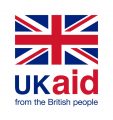Voting by Lining-up in Local Elections: Evidence from Uganda
DownloadFollowing decades of colonialism and a violent political history, Uganda has reached a state of relative stability and economic growth. The Ugandan decentralization reform initiated in 1992 is exceptional among developing countries in terms of the scale and scope of the transfer of power and responsibilities to the local level. Decentralized governance, pushed under the Museveni government since 1986, represented part of the political strategy of the new regime to install a new and revolutionary concept of democracy: democracy that is participatory, grassroots based, and popular.
Uganda had its first local-level elections, i.e., the village and parish (LC1 and LC2), under the multi-party political system, in July 2018. Regular elections have occurred at the district, county, and sub-county levels (LC3, LC4, and LC5) with relatively high voter turnout. At the local level, there had been no formal elections since 2002. That is, since the multi-party political system was put into place in 2005. While elections at the higher levels are conducted by secret ballot, these recent local elections (LC1 and LC2) took place by a voting method where voters line up behind the candidate of choice (see figure 1, for a visual representation of the method)
This voting procedure was introduced in 2014 when Parliament passed The Local Government Amendment Bill. This election procedure is unusual but not unheard of in rural Africa. Referred to as Mlolongo, it originated in Kenya and has been used for several local elections in Sudan. There have been public discussions on the method held on local media platforms and from Ugandan democratic advocacy groups calling it unusual at best and “dangerous” at worst, referring to the initimidation and harassment faced by voters. , To the best of our knowledge there has been no systematic research on this voting process before. This policy brief helps to fill this knowledge gap by using unique observational data collected from 50 study villages in rural Uganda on the election day of July 10, 2018.




